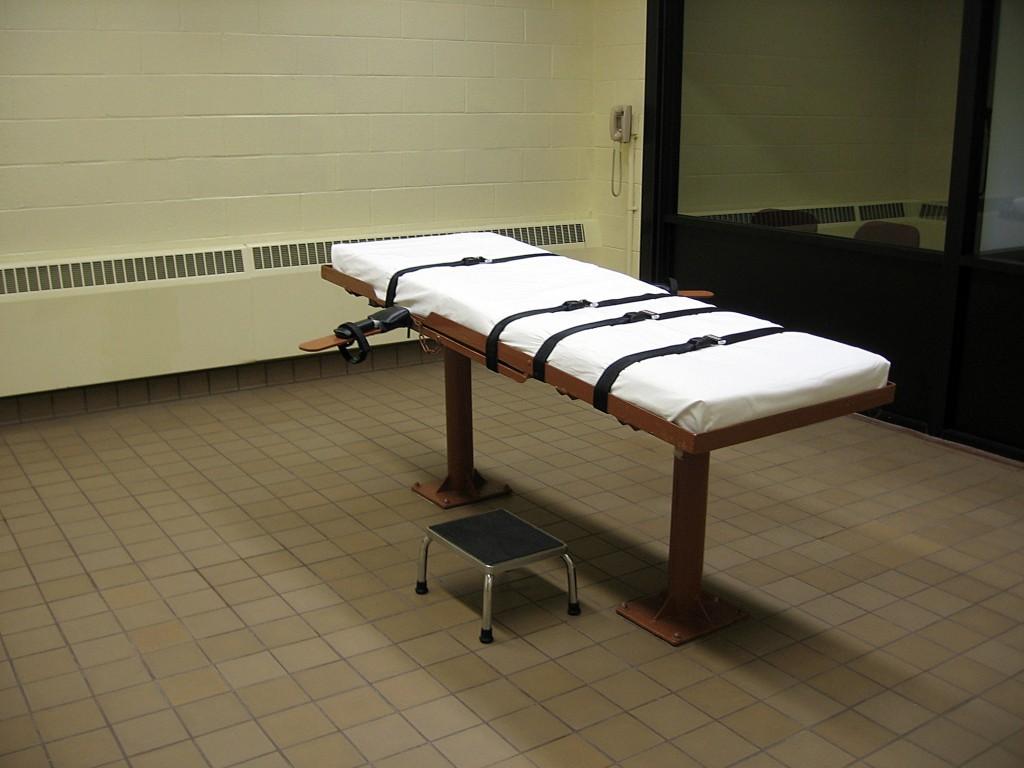Top Five Articles Covering Ohio’s Planned Execution Spree
Ohio has not conducted an execution in over three years. That’s about to change. The state has scheduled 27 executions in the three year period between today and September 2020. For context, the entire country performed a *total* of 62 executions between 2014–2016. Here are the best five articles we’ve read on Ohio’s abrupt change of course. Bidish Sarma, Ohio […]

Ohio has not conducted an execution in over three years. That’s about to change. The state has scheduled 27 executions in the three year period between today and September 2020. For context, the entire country performed a *total* of 62 executions between 2014–2016.
Here are the best five articles we’ve read on Ohio’s abrupt change of course.
- Bidish Sarma, Ohio is Set to Become the Texas of the North. Here’s Why It Shouldn’t, In Justice Today. Sarma writes, “One need not move past Ronald Phillips’s case to unearth the seismic defects in Ohio’s capital punishment scheme. In 1993, when a jury sent Philips to death row, the jurors did not have the option to impose a life without parole sentence. Today, every jury has that option.” Phillips is described as “a rather simple, emotionally immature, psychologically inadequate person.” He was 19 at the time of the offense and he had endured sexual abuse as a young child. Also, from Sarma, referring to Gary Otte, the man slotted for execution after Phillips: “Given our recognition that 17 year-old who have developed normally can never receive the death penalty, it is difficult to understand why Ohio is pushing to kill a ‘slow,’ drug-addicted 20 year-old with severe depression and a history of suicide attempts.”
- Carter Sherman, Ohio will continue using drug deployed in botched executions, Vice. The last execution Ohio performed, which took place in 2014, was botched. The Columbus Dispatch reported that Dennis McGuire “gasped, choked, clenched his fists and appeared to struggle against his restraints for about 10 minutes.” The Dispatch quoted an anesthesiologist who said McGuire experienced “true pain and suffering” and concluded that “this was not a humane execution.” In Vice, Sherman covers the recent decision of the U.S. Court of Appeals for the Sixth Circuit, which permitted Ohio to continue to use midazolam, one of the drugs linked to a string of botched executions. | See Also: On Tuesday, the U.S. Supreme Court refused to hear a challenge to Ohio’s execution protocol. Justice Sonia Sotomayor dissented from the denial of certiorari, writing, in part, “I dissent again from this Court’s failure to step in when significant issues of life and death are present.” A group of fifteen pharmacologists filed a friend of the court brief which read, in part: “At bottom, the parties dispute whether midazolam is an appropriate step-one drug to render the inmate unconscious and incapable of perceiving pain during the lethal-injection process. From a pharmacological perspective, the answer is no.”
- Jim Petro and Lee Fisher, Gov. John Kasich should prevent Ohio executions from resuming, Cleveland Plain Dealer. In 2014, a Ohio Supreme Court and Ohio State Bar Association Joint Task Force on the Administration of Ohio’s Death Penalty issued a report citing numerous problems with the state’s death penalty. The Task Force made a series of recommendations to, as Petro and Fisher put it, “reduce racial disparity, increase accuracy in sentencing, ensure better lawyers for indigent defendants, and more.” The report was ignored in practice. Petro (R) and Fisher (D), two former Ohio Attorneys General, argue in this editorial that Ohio’s death penalty system remains broken and executions should not resume. | See also: Robert Higgs describes in detail the recommendations of the 2014 Task Force report for the Plain Dealer. Read the full report here.
- Scott Martelle, Ohio has a troubled death penalty system yet intends to resume executions anyway, L.A. Times. Scott Martelle, a columnist for the Los Angeles Times, explains his objections to the resumption of executions in Ohio. Chief among the concerns are Ohio’s nine exonerations of death row inmates, which he describes as a “pretty high failure rate in a state with 140 people on death row, and 53 executions since 1999.” | See also: Dale Johnston, Wrongful convictions make death penalty too risky, Columbus Dispatch. Dale Johnson was wrongfully convicted of murder in Ohio in 1984, sentenced to death, and exonerated in 1990. Johnston discusses how the only evidence presented in his case was eyewitness identification by one person who had undergone hypnosis and boot-print evidence that was later debunked.
- Linda Collins, Op-ed: My husband supervised Ohio executions for 5 years. It changed his life, WCPO-Cincinnati. Linda Collins, the widow of former Ohio Department of Rehabilitation and Correction Terry Collins, writes that her husband oversaw 33 executions during his decades-long career. She notes that “even under the best circumstances, executions are very hard on the corrections staff.” According to Collins, her husband took work psychologically home with him and discussed his need to disassociate as a coping mechanism. He also felt significant stress over whether or not his department was executing the truly guilty, especially because he had “personally walked innocent people out the front doors of prisons.” | See also: LaShawn Ajamu, Victims’ families in Ohio need resources, not executions, Toledo Blade. LaShawn Ajamu is the brother of an Ohio homicide victim, James Nero. She explains that Ohio provided few services to help her and her family cope. Without resources to the family members of homicide victims, Ajamu considers talk from politicians that the death penalty brings closure to victims to be nothing more than “political grandstanding.”
